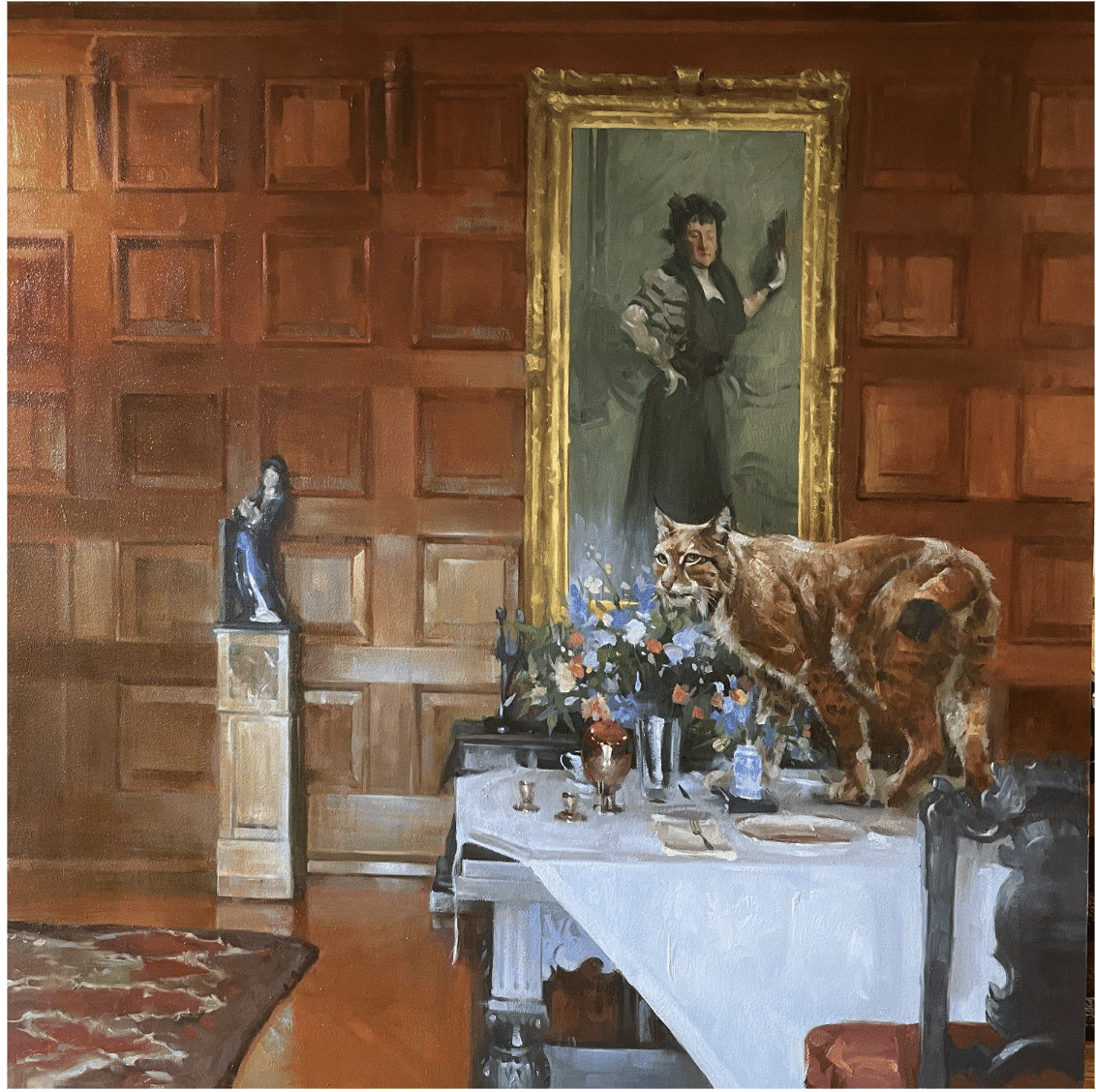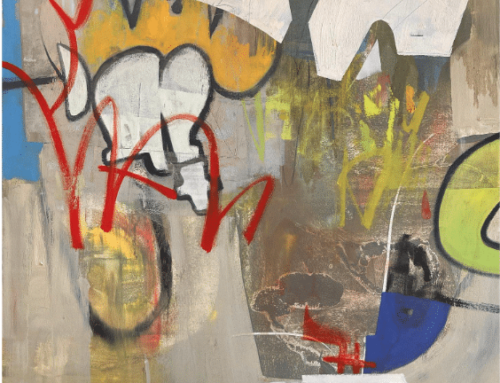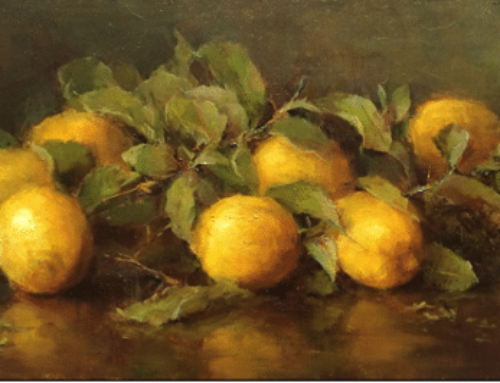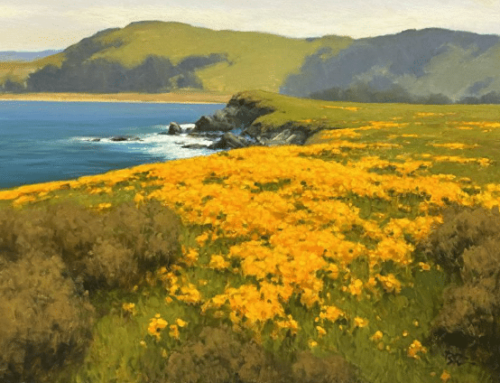Good artists imitate; great artists steal. This phrase is variously attributed to Steve Jobs (who misattributed it to Pablo Picasso), and to Lionel Trilling, Igor Stravinsky, T.S. Eliot, and William Faulkner. (Oh, and the less well-known English man of letters W.H. Davenport Adams, who, it seems, formulated the earliest version of it while writing for The Gentleman’s Magazine in 1892).
“You don’t have to look like your heroes, you want to see like your heroes,” writes Austin Kleon in his book, Steal Like an Artist published in 2012. Like the luminaries above quoted (or misquoted), Kleon doesn’t mean ‘steal’ as in plagiarize or blatantly rip off — rather, study, credit, but more importantly, recontextualize, remix, mash up, and recombine into ‘something rich and strange,” that is, your own.
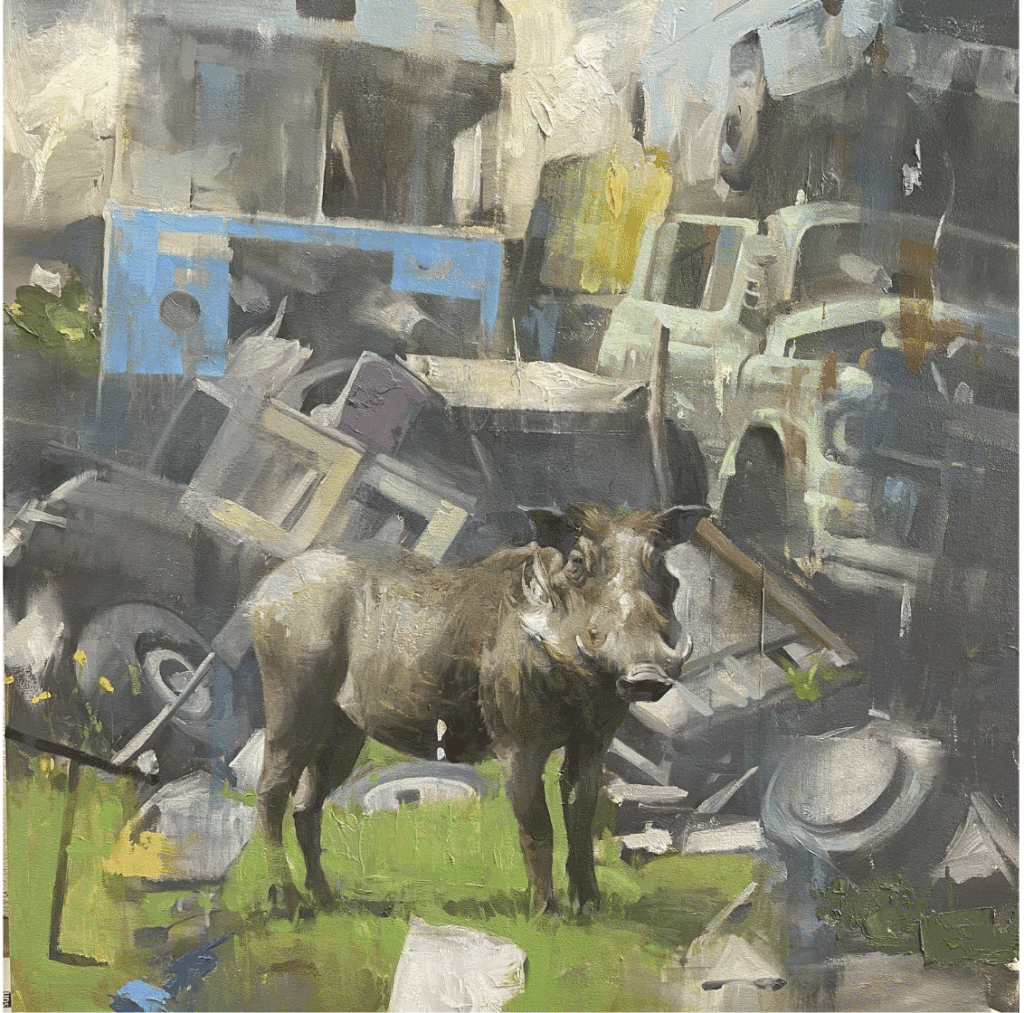
Larry Moore, Junkyard Hog, 30” x 30” oil on wood
Scientific discoveries work the same way – scientists constantly review, share, combine and recombine other scientists’ work to create new insights, theories, and discoveries. Copying, by the way, isn’t imitating in this sense – it’s just how artists learn – always has been, always will.
No one blames scientists for taking other scientists’ work as their starting point. In the same way, creative work builds on what came before. So in a sense there is nothing new under the sun, except you: No one has the same creative DNA – the same combination of memories, dreams, doubts, fears, skillsets, secret freak superpowers and fantasizes. THAT’S what you draw upon to be “original.” A big part of becoming an artist is finding out and learning to accept who you are.
As Kleon says, “You don’t need to be a genius, you just need to be yourself.” It’s so hard not to get caught up in what the other artists you know are doing (and doing better than you) – but that only slows you down and gets you nowhere. You’re a unique amalgam of experiences, influences, and ideas. You’re stuck with yourself – like it or leave it.
And if you sometimes think you’re just a sponge, chasing and hoovering onto every shiny new painting or painter who comes your way– make that your superpower. The art we admire, the masters who seem gifted by the fickle gods – none of this stuff happens in a vacuum. Take what you find everywhere – everybody does.
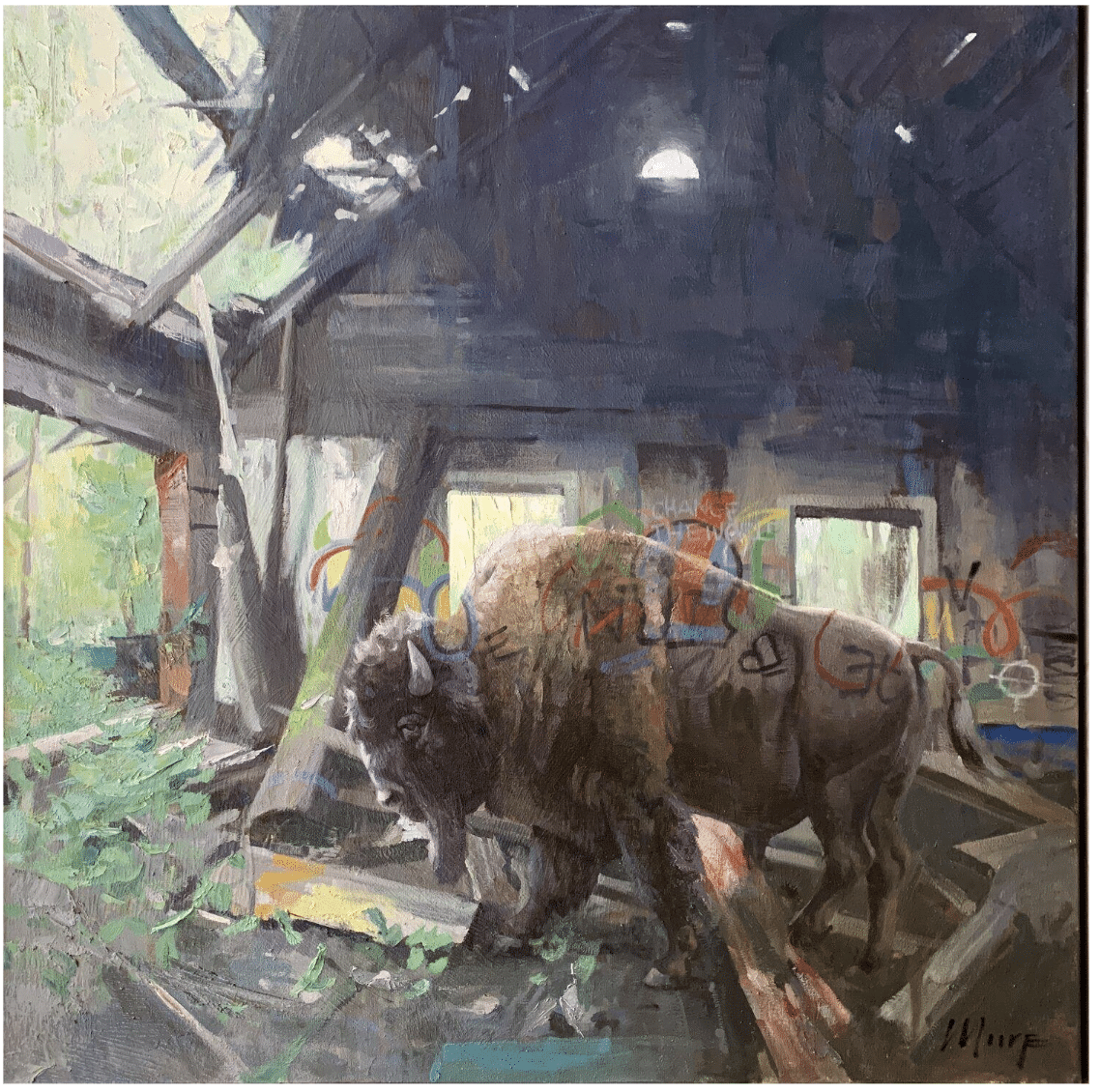
Larry Moore, American Graffiti, oil, 36” x 36”
There is a kind of “science” to “stealing.” It isn’t chasing after every Next Big Thing. And yet, rather than trying to be totally original, great artists consciously work within the traditions, the rivalries, and the larger contexts they share with all. To get there, as Matisse wisely advised, don’t imitate the results, emulate the creative drive behind them.
It’s a mindset as much as anything else. Somebody once said writers should be reading constantly – even if it’s just the text on a ketchup bottle or a box of cereal at breakfast. So for any artist. Put yourself in the path of lots of what you like and even lots of what you don’t – everything is fair game for creativity.
Larry Moore, whose work illustrates our post, is an artist with his own take on the creative growth process. “Museums aren’t filled with the same kind of work. The walls are lined with artwork created by rule-breakers and game-changers,” he says. Larry has a video called The Creativity Course: Finding Your Unique Painting Language. Check it out here.
Cycling Through Watercolor Live
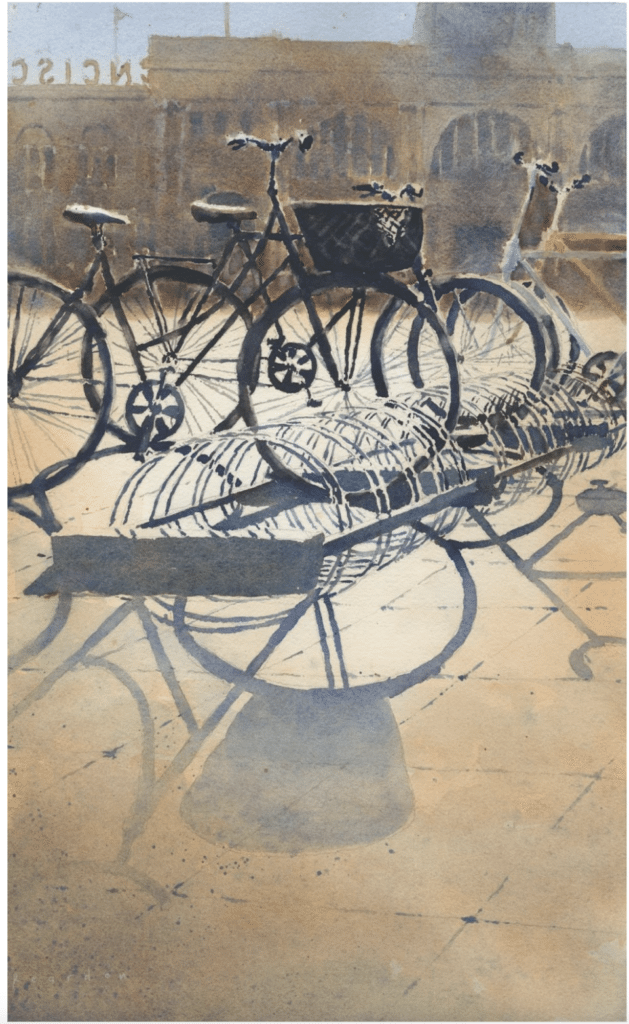
Michael Reardon, Ferry Bicycles, watercolor, 18×11 inches
Michael Reardon demonstrated his approach in watercolors at last week’s Watercolor Live online conference (Jan. 23 – 27).
Michael has been painting in watercolor for over 30 years. An avid traveler, he uses watercolor to record his observations, convey a sense of place and light, and communicate his impressions of the built, natural, and imagined worlds. He works from his studio in Oakland, California.
In 2005 he was the recipient of the prestigious Gabriel Prize from the Western European Architecture Foundation, which enabled him to spend three months painting in Paris. Originally trained as an architect with a degree in architecture from UC Berkeley, he was an architectural illustrator for over thirty years. In 2004 he was awarded the Hugh Ferriss Memorial Prize, the premier award in the field of architectural illustration.

